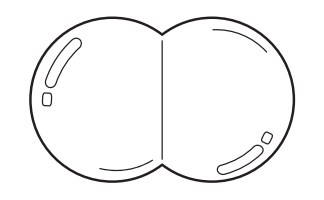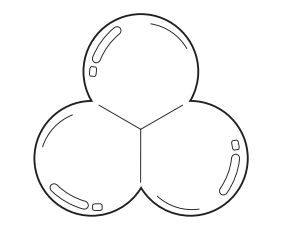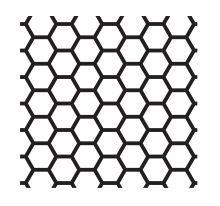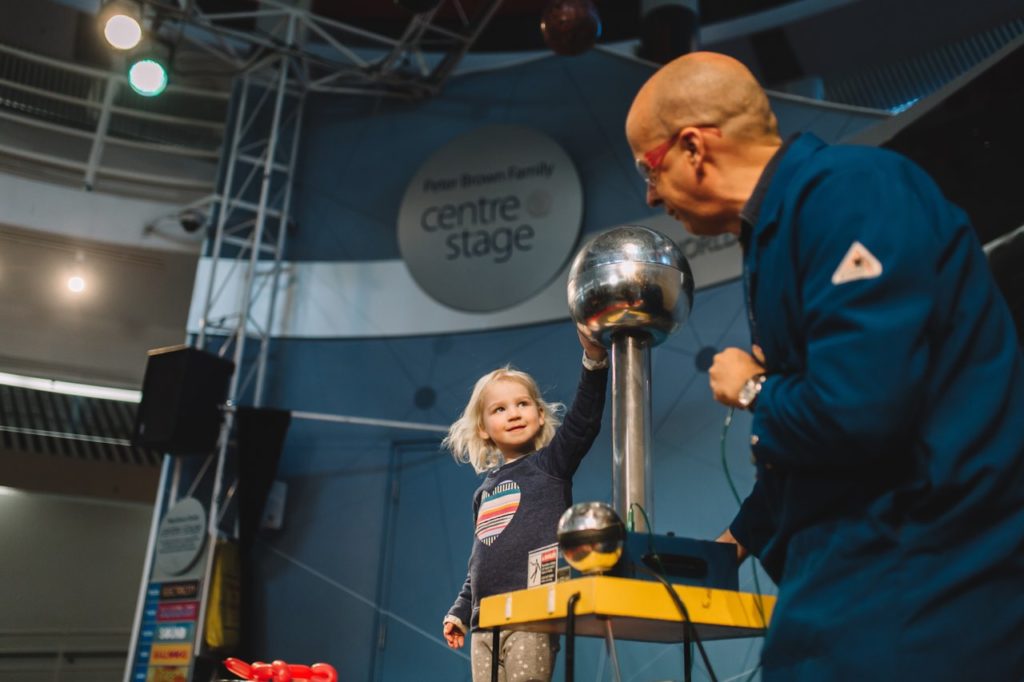In this activity, students blow clusters of bubbles to explore the geometry of bubble structures.
Bubbles join in a way that requires the least amount of stretching, keeping a minimal surface structure. The patterns created by bubble clusters were first observed and written down by Belgian physicist Joseph Plateau in the 19th century, but you can recreate these patterns today using only a little bubble solution and a straw.

Two Bubbles
When two bubbles meet, they will join and share one common wall. If the bubbles are the same size the wall between them will be flat, because this uses the minimal surface area (this fact was actually just proven in 2000 and is called the Double Bubble Conjecture).
If the bubbles are different sizes, the smaller bubble pushes the wall and bulges into the larger bubble, because it has a higher internal pressure. See soapbubble.dk for more about air pressure in bubbles.

Three Bubbles
When three bubbles meet (even if they’re different sizes), three walls will form a Y shape. The angles between the bubble walls are always 120° (360° divided by 3).
More than Three Bubbles (on a flat surface)
As you add more bubbles to a cluster on a flat surface, they will rearrange themselves so that there are never more than three films in contact along an line or four films in contact at any one point. This creates multiple 120° angles in the shape of a Y.

A network of 120° angles creates a pattern of hexagons. Bees build honeycombs in the shape of hexagons for the same reason that bubbles build hexagons—it’s the way to make the most compartments with the least amount of “stuff” forming the walls.
More than Three Bubbles (in 3 dimensions)
You can only create clusters of more than three bubbles in 3 dimensions (e.g. free-floating bubbles, or bubbles hanging from a bubble wand).
Four bubbles will always form edges that meet at 109 degrees 29 minutes and 16 seconds. They will form a 3 dimensional Y shape called a tetrahedron.
Another way to think of this is that six bubble sheets meet at 109 degrees.

